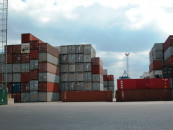Low data pricing stunts telecom growth
Regulatory support needed for going ahead with infrastructure spending

PHOTO: REUTERS
Since the launch of third generation (3G) and 4G services in July 2014, the number of consumers looking to utilise high-speed mobile internet has crossed 23 million. In the meantime, the cellular subscriber base has reached 125 million. Seeing these figures, people will believe that telecom companies (telcos) are doing a handsome business in the country.
Telecom Policy 2015: Collection of platitudes
However, this is definitely not the case. A major trouble for the industry is pricing, which has been brought down by fierce competition amongst the five telcos and has likely reached the edge of sustainability.
Prior to the launch of high-speed mobile broadband, it was expected that data charges would push a lot of consumers out of the market as the telcos had spent over $2 billion on the 3G and 4G spectrum licences and the rollout of next generation network.
But surprisingly, they chose to keep data charges at the bare minimum, in a move, which initially sparked a digital revolution supported by affordable smartphones, that caused a 12% growth in broadband penetration in 2015, up from a mere 2.07% in 2014. This number is forecast to reach 44% by 2020, which according to the World Bank estimate will add 4.1% to the country’s economic output.
Although it is not uncommon for operators around the world to set data prices below sustainability levels for certain services, this is mostly balanced out by charging higher rates for other services.
In Pakistan, however, the operators cannot follow that path since other major services – voice and messaging – already have OTT (Over-The-Top) alternatives and the consumer does not have the same buying power as in other nations.
Revenue conundrum
The conundrum that telcos now face in the light of low data pricing is lower-than-required revenue generation, which is necessary to fuel further network expansion. This is where the regulatory bodies need to favourably review the framework to ensure continued investment in the sector.
Mobile broadband demand growing at rapid pace
All telcos are committed to achieving the goals set by the government in the ‘Pakistan 2025 – One Nation, One Vision’, which calls for increasing internet penetration to over 50%. This will only be possible if mobile operators generate enough revenues for sustaining a higher level of investment.
Interestingly, despite being among top 10 countries of the world in terms of mobile users, the share of mobile broadband users in Pakistan is low at 12%, according to the State Bank of Pakistan’s first quarterly report for fiscal year 2015-16.
While mobile operators are able to keep earning revenues due to higher data usage, margins are greatly affected by taxes that eat about 50% of the revenues. The rest is swallowed by high operating costs, particularly the network and marketing expenses.
According to statistics, Pakistan’s telecom industry is the fourth most heavily taxed in the world.
The fact is that low data pricing, without proper regulatory support, is detrimental for the industry. If taxes continue to eat up revenues, the telcos will be forced to significantly curtail their operating and capital expenses.
Some of them have already slowed down infrastructure development after the initial rapid network expansion in more than 200 cities and towns.
Cellular provider launches special package
The government wants to bridge the digital divide and promote digital inclusion across the country, but it fails to understand a basic concept: such goals are unrealistic when high taxes impact the already strained revenues due to the pricing model.
“Heavy taxes coupled with the low data pricing model are a major hurdle to the industry,” said an analyst. “Levies such as federal excise duty, internet tax, provincial sales tax and withholding tax are at the higher level in comparison to the region. These make the tax system complicated and add to the compliance cost.”
Growth in the mobile industry now relies more than ever on persuading the existing subscribers to upgrade their subscriptions for new services and apps including mobile banking.
If the telcos and regulatory bodies do not reach a common ground, then it will be the consumer who will face the consequences due to poor service and slowdown in introduction of new technologies and services.
The writer is an avid follower of the telecom industry across the developing world
Published in The Express Tribune, March 14th, 2016.
Like Business on Facebook, follow @TribuneBiz on Twitter to stay informed and join in the conversation.



















COMMENTS
Comments are moderated and generally will be posted if they are on-topic and not abusive.
For more information, please see our Comments FAQ